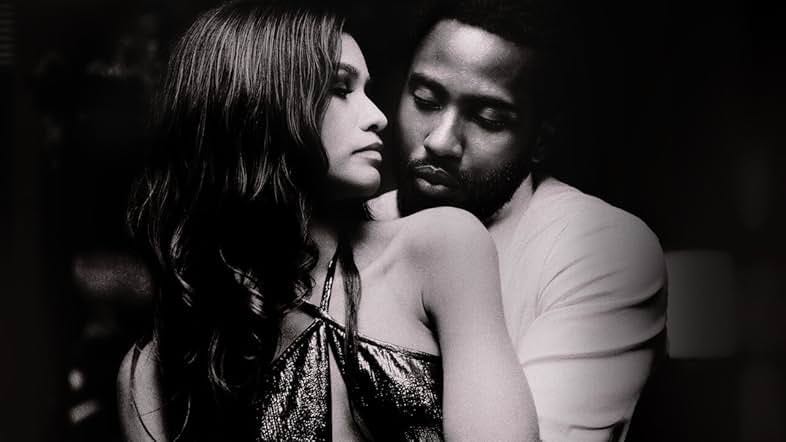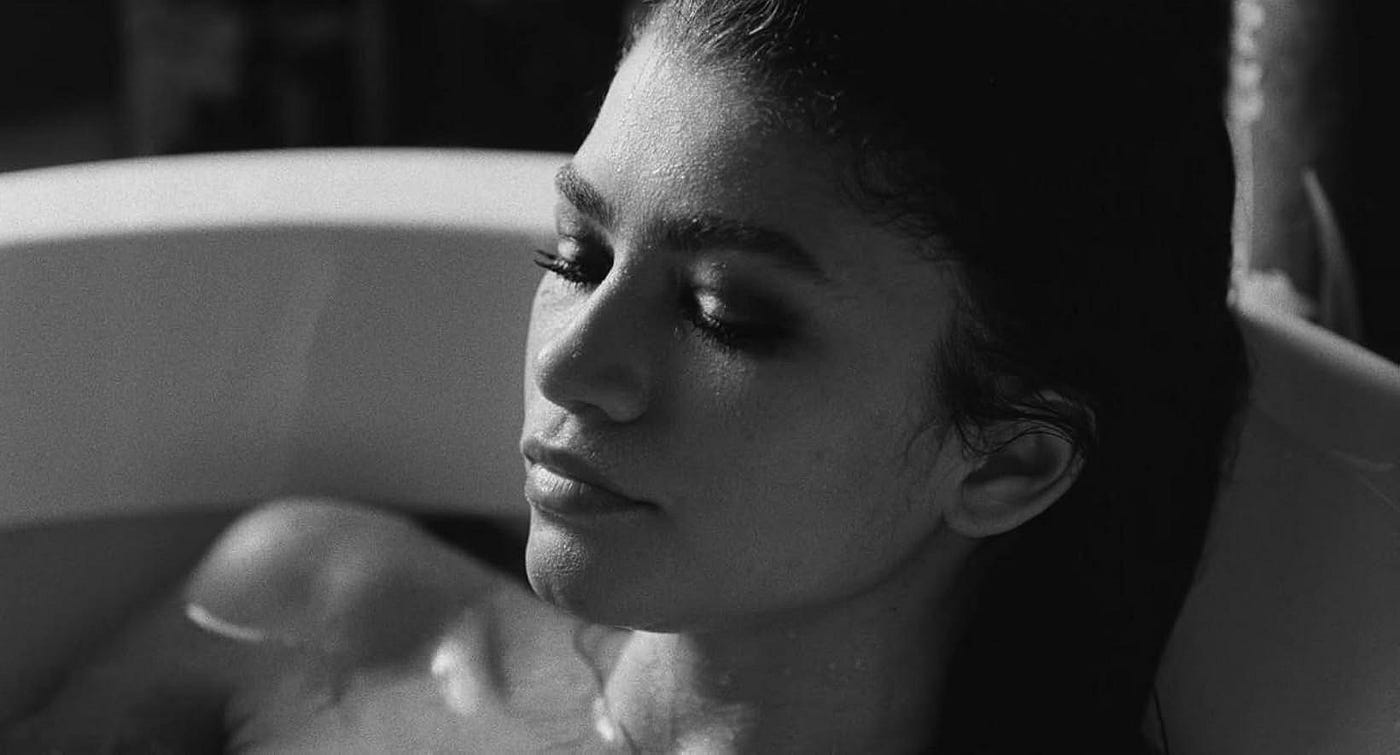Why Your Story Feels Flat
The one where we talk about writing subtext, authentic voices, the TikTok ban, and David Lynch
Happy Monday, my friends!
Before we jump into the exciting film dissections and storytelling lessons we have lined up for you today, I feel it necessary to acknowledge the somber note of David Lynch’s passing this last week. Though I’ve not become familiar with his work myself yet, I found the tribute that shared deeply insightful and moving. Sometimes, we need the grim reminders of real life and death to refocus our hearts on WHY we tell stories the way we do. I hope you’ll take a moment to read this tribute from our team member and gain an appreciation for a legendary soul who created important art.
An Open Letter To and In Honor of David Lynch
Above all, Lynch proved to me that what made a great filmmaker was their soul, not their life story, and that made all the difference for a troubled man like me.
Please share your David Lynch stories with us in the comments below.
“Raise a glass.”
(OBA Media Newsletter Editor-in-Chief)P.S. Scroll all the way down for your early release of our next podcast episode, where we talk about breaking traditional storytelling rules in the film The Piano Lesson!
The #1 Lesson You Can Steal From Filmmakers to Transform Your Writing
Ever been around people who speak a different language than you? By the way they speak you know something is being said — you just have no idea what it is. That’s how I like to view the technique we’re talking about today: subtext.
Subtext is what’s NOT being said, whether communicated through word, action, or some other external device in the middle of everything that’s actually happening. Confused? Welcome to my life these last few years.
A movie that helped me understand how subtext works and how to use it on a simple level was the 2021 Netflix film Malcolm & Marie. Now, regardless of what the critics say about this movie, you can’t deny that it’s a subtext and contrast genius.
If you haven’t seen the film, it’s a movie about a couple arguing. That’s it. At least on the surface. But that’s the brilliance of this movie — it’s about so much more. To spend an hour and 45 minutes with two people arguing sounds like a nightmare, and it is. Until you start digging into all the subtextual details working double-time around this simple premise.
So, how do you get your story to speak even when it’s not speaking? How do you use contrast to paint a picture of what you really mean? Let’s take a look at Malcolm & Marie.
Contrast
What We See in Malcolm & Marie
This movie is in black and white. The coloring is an artistic choice which reflects the stark contrasts and dualities in Malcolm and Marie’s relationship: passion vs. indifference, understanding vs. miscommunication. The color choice contrasts the very fact that arguments are never clear cut and never black and white.
Emotional contrasts are big here. For example, the sweet moment when Malcolm tells Marie how beautiful she is quickly turns sour when their unresolved issues come to the surface and another argument erupts. The sudden shift from tenderness to hostility captures the explosive nature of their relationship, where even the sweetest moments are laced with an underlying tension that reveals how love and resentment intertwine in their dynamic.
The setting of the film is itself a symbol of contrast. The big, elegant, and transparent house that Malcolm and Marie are staying in stands in stark opposition to the suffocating isolation and double meanings in their arguments. All these little visual and verbal details that contrast opposing tones and meanings are here for a reason.
But Why Does Contrast Matter?
The film’s visual and emotional contrasts amplify the tension of what’s depicted on the screen, keeping the whole story from being straightforward and boring. Imagine if the movie was in color and mostly took place in an apartment building. You wouldn’t feel the nuanced depth of the characters in the same way because the setting would be unspecific and without much to say.
The duality of love and resentment forces us to grapple with the complexity of the couple’s relationship. There is a physical representation in the film for every contradiction in Malcolm and Marie’s arguments, which land with us because we are forced to confront those same contradictions in our own relationships. It’s the complexity of marriage in a nutshell. In this story, these contrasts are physically manifested in the set design, the cinematography, and even the writing itself. These little details draw us in because they give different parts of our brains a link to the story to latch onto.
How To Use Contrast
When you’re telling your stories, put your characters in situations where the events feel unexpected or ironic. For example, take a couple everyone knows as “The Perfect Couple.” Instead of breaking up in a somber, private setting, have them confront their issues in the middle of a carnival. The contrast between the jovial carnival and the devastation of their breakup is the difference between how the world sees their relationship and the darker truths they face behind closed doors. The loudness of everyone else’s joy amplifies the silence of the pain.
Another example might be a war correspondent who’s been disgraced and assigned to cover a local beauty pageant. Despite the peaceful setting, she wears her purse strapped across her chest like a piece of Kevlar. This small detail shows she still feels like she’s in a war zone and can’t let her guard down or feel safe.
Moments of contrast–big or small–add subtext and depth to your story. This technique isn’t limited to film; it works just as well in prose. Look for opportunities to juxtapose elements in your narrative, whether it’s setting a scene against an unexpected backdrop or showing character traits that contradict their behavior. These contrasts make their way into the reader’s subconscious and start to make them feel like the story is heavy and alive.
Subtext
What We See in Malcolm & Marie
Malcolm eating mac and cheese while Marie is giving her heartfelt speech is full of subtext. It’s not just a mundane action — it’s him dismissing and avoiding her.
Earlier in the movie Malcolm accuses Marie of wanting to be the lead in his film and Marie says she’s actually upset he didn’t thank her in his speech. Malcolm brushes the comment off and says she wants to be in the movie, essentially telling her she’s not right for the part. In a later scene Marie wields a knife and pretends to have a mental breakdown only to reveal she is acting to show she could have done the role. On the surface, this moment looks like a toxic callback to their earlier argument but the scenic rhyme is so much more: a critique of how he sees her and a cry for recognition from her partner.
In the end, during the “breakup” scene, while they’re joking with each other, Marie reveals her real frustration with Malcolm not acknowledging her contributions to his success. This moment where she admits the root of her frustration with Malcolm being wrapped up in a lighthearted tone is a perfect example of how subtext underscores their conversations.
But Why Does Subtext Matter?
Have you ever listened to someone talk and your eyes have glazed over? Like you’re there in the conversation but your lights aren’t on? This detachment happens in stories all the time. The writer wants us to pay attention to the story but because nothing’s happening or the writer is doing all the work for us we get no entertainment from the telling. We don’t engage with the material. Subtext solves this problem by making our audience dig deeper into the story to find the meaning beneath the surface. They’re paying attention to the text but they’re also trying to see what’s hiding behind the words.
Subtext also mirrors real life. Words have meaning. Often, their meaning is so powerful at baring our hearts that we don’t feel brave enough to say exactly what we mean. Utilizing subtext makes characters’ inner lives and motivations feel real to us. When your characters feel relatable to your audience, they will take the message in your story straight to heart.
How You Can Use Subtext
Use subtext to add depth to the dialogue and actions. Make sure there are at least two — if not more — conversations happening on the page: the words the reader can take at face value and the ones left unsaid.
Look at the conversation from Malcom & Marie:
MALCOLM: “You want control because you don’t trust I can build something great without you. That I can make something of myself without your fingerprints all over it. That’s what this is about.”
MARIE: “No, Malcolm. This is about you being so obsessed with being successful you don’t even realize what you’ve lost in the process. You’re so busy being great you don’t even know if you’re a good person anymore.”
MALCOLM: “I’m a good person because I’m here, Marie. I stayed. I’m not like the others who left you. You think I owe you everything because you stayed with me when I had nothing. But let me remind you, you had nothing too.”
MARIE: “Yeah, but I gave you everything I had, Malcolm. And somehow it still wasn’t enough.”
On the surface, Malcolm is accusing Marie of wanting control of his success and dismissing her emotional investment. Marie is questioning whether Malcolm’s success-driven mindset has made him lose touch with himself.
But underneath their dialogue, Marie’s not just criticizing Malcolm’s success-driven self. She’s calling out how his ambition has destroyed their relationship. The line, “I gave you everything I had and somehow it still wasn’t enough”, shows a pain far deeper — she feels used, discarded and irrelevant now that Malcolm has achieved his goals.
Meanwhile, Malcolm feels he owes Marie for her support but resents how she uses that support as a weapon. His defensiveness is hiding the fear that he really is everything she says he is. Yet he can’t admit that. By leaving so much unsaid, the story makes their real feelings hit even harder, showing how much tension is bubbling under the surface.
Emotional Immersion
What We See in Malcolm & Marie
Emotional immersion is another tool that reveals subtext. The film’s close-ups and handheld shots make us feel the emotions of each argument. The arguments don’t give us a chance to look away. The visuals mirror the unresolved and claustrophobic conflict.
For example, in the bathtub scene, we are forced to watch both Malcolm and Marie’s faces as Malcolm rambles off a list of women he has ever been with, using extremely vivid language to make every detail of his experiences hurt Marie like slinging bullets. We have to try as hard as Marie does not to flinch.
Another example of emotional immersion is when Malcolm rants about film critics. This scene drags on intentionally to reflect his self-absorbed nature. By the time he is done passionately beating the dead horse, we are as exhausted and annoyed at his dramatics as Marie must be living with him.
But Why Does Emotional Immersion Matter?
When we put the audience in the character’s emotional world the story becomes an experience. Watching the film doesn’t just feel like you’re watching a movie anymore — it feels like you’re in the room with the characters. Watching Malcolm & Marie is a slightly uncomfortable experience, like you’re witnessing something you’re not supposed to. We feel the emotions of both the accused and the accuser as their conversation unfolds. This tone and atmosphere puts us IN the story.
By that 105 minute mark, we can walk away from the film with a deep understanding of the characters’ inner turmoil. We know these people and we’ve felt their emotions. In the end, we feel like we were in the fight ourselves.
This immersion also means we’ve learned the importance of the lessons these characters have learned ourselves.
How To Use Emotional Immersion
Sensory details and pacing are crucial tools to put your audience in your character’s emotions. Advice to keep pacing tight abounds, but don’t forget to take your time and let us spend a moment with your characters. A slow and drawn out description of a character’s reaction to bad news can make us feel the weight of the moment. The suspense of watching a character consider how they will react makes us consider how we would react in their shoes. Let the camera, or a reader’s imagination, stay on one character’s face as the other person’s words land so that we actually FEEL the moment.
The Short of It
Malcolm & Marie shows us that simplicity doesn’t mean shallow. The premise, cast, setting, and colors are all extremely minimal, but the film is as deeply layered as our real life relationships. Using contrast and subtext, the film delivers a raw, emotional story that sticks in your head. These tools aren’t just for filmmakers–they’re for any storyteller who wants to tell powerful, realistic stories.
Look at your own work and find places where you can heighten the experience by layering contrast and subtext. I challenge you to make your story an emotionally immersive experience. Trust your audience to read between the lines. Ask yourself:
Are you focusing on showing, not telling?
Are you letting your audience do the work and understand the characters through the filter of their own experiences and perspective?
I promise you that your work will be killer and land powerfully if you try these techniques out. Remember: the depth is in the details.
Do you need help knowing if you are implementing subtext well in your writing? The team at OBA Media is here for you! We want to help you craft stories that resonate and gain the confidence to tell them well.
“Let’s Talk Stories!” Ep. 2
Subscribers to OBA’s newsletter get early access to our podcast episodes. Today, the team is talking about authenticity and defying genre expectations in the film The Piano Lesson.
Let's Talk The Piano Lesson (Ep. 2)
In this episode of Let's Talk Stories, your hosts discuss our recent media experiences, focusing on the film 'The Piano Lesson' and its themes of authenticity, cultural representation, and the complexities of character development. Join us as we explore the importance of dialogue in storytelling, the significance of breaking traditional storytelling rul…
Catch up with our previous episodes here:
To submit a question for
to answer in the next “After Hours” episode, feel free to reply to this email or drop a comment!CAPTAIN’S LOG
1/18/2024
As consumers and humans, we are all appreciative of the positive things that TikTok has provided for us. As creators, we also have a vested interest in the social media platform for helping us reach an audience of people our work can support. With the TikTok ban looming, I feel frustrated at the reminder of how it feels as a solopreneur to be fighting an uphill battle against unbalanced power dynamics. Nothing in this world is simple and nothing is dependable as we would like to think. It is a sad reality that the living we make baring our souls in the stories we tell for the good of humanity is somehow always at the mercy of politics and global powers at play. The best advice
shared with me when we were discussing the topic was to look at these shifting tides as an opportunity to jump on new platforms that will emerge in the void left by TikTok before they become overly-saturated with other content creators. Also, we should always be reminded of the importance of not putting all of our eggs in one basket. Never depend on an external platform that is owned by somebody you don’t know to keep you connected with your audience. A huge reason we are grateful for the heart behind not owning a monopoly on the people who subscribe to us lowly writers! Reminder: signing up to receive emails is the best way you can connect with and support the people who create content that resonates with you. 🖤











Interesting read! Makes me wonder how much of this is applicable to writing, storytelling is storytelling after all. I'll share with my writing group :)